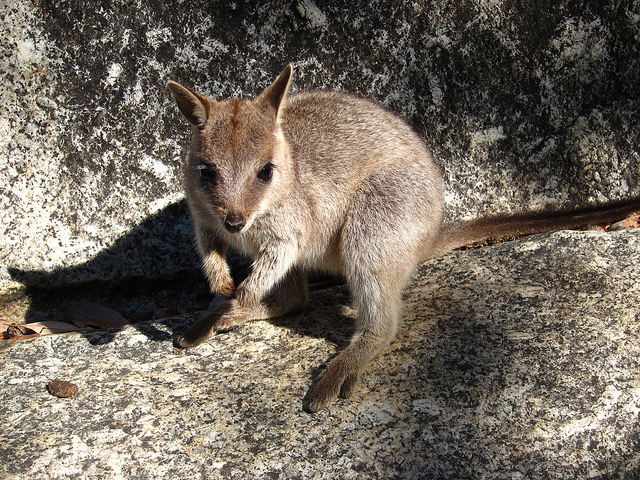Wallaby Eradication Programs

The Kiwi Connection
In about 1870, the Governor of New Zealand, Sir George Grey, introduced a selection of birds and animals to an island called Kawau off the east coast of the north island of New Zealand. Included in the selection were five species of wallabies sourced from various locations on the Australian mainland.
While the specific reasons for the release are uncertain and many of the birds and animals failed to survive, the wallaby populations thrived due to the absence of predators, reduced competition and plentiful food.
In a strange twist of accidental genius, out of the five wallaby species Sir Grey introduced, he managed to select three species that are now currently threatened on the Australian mainland (Tammar Wallaby, Parma Wallaby, and Brush Tailed Rock Wallaby). One of the other two species, The Black Striped Wallaby, appears to have failed to survive after a successful run of over eighty years as is now extremely rare or possibly extinct on Kawau. The Black Striped Wallaby is still well established in New South Wales and Queensland, Australia. The fifth species, the Swamp Wallaby, has established itself on Kawau but also exists in significant numbers on the east coast of the Australian mainland.
As recently as 1966, the Parma Wallaby was thought to be extinct in Australia, however a number of small populations have since been discovered in New South Wales. The Tammar is listed as extinct on the Australian mainland however there are populations of a sub-species still existing on small islands off South Australia. A conservation effort to re-introduce Tammars onto the mainland in South Australia from the New Zealand stock has been attempted and has achieved limited success. Waterfall Springs, successfully imported a population of Brush Tailed Rock Wallabies from New Zealand. It's still possible to import New Zealand wallabies into Australia, but it's not easy, with strict controls and quarantine periods of six months prior to release.
Up until the late 1990s, live capture and export of the New Zealand wallabies, mainly to zoos overseas, was taking place. For two of the species, the Tammar and the Parma, this may not have been such a great idea as these two endangered species are nocturnal. Not exactly entertaining daytime exhibits! At least the export diversified the population, so next time you visit a zoo overseas and see an Australian Tammar or Parma wallaby, the chances are it came from New Zealand stock!
Ironically, the Tammar, Parma, Brush Tailed Rock and Swamp wallabies have become so successful on Kawau that they are now considered a pest as they damage the natural flora and compete with the native wildlife. The Pohutukawa Trust New Zealand has established a program to eradicate the wallabies from Kawau island and currently has the assistance of the New Zealand Department of Conservation who is providing partial funding to the program. If the wallabies are eradicated from Kawau, then it is likely that the IUCN rating on the Tammar, Parma and Brush Tailed Rock wallabies will undergo a re-rating to a more severe status due the reduced population and biodiversity.
On a Mission
On Mission Beach in Queensland, there is an ongoing struggle between the residents and the wallabies. Mission Beach is on the mainland fringe of the Whitsunday Islands. Due to extensive development in the last 30 years, the town is now a thriving community which services a large tourist industry. Property prices have increased, infrastructure has improved and the town enjoys a stable tourist industry in part due to the proximity of the Whitsunday Islands. Unfortunately, the Agile Wallabies appear to be getting in the way of progress. In an astonishing move, the Queensland Government has approved the culling of over a thousand wallabies, when the nearest calculation of the population is estimated at around the four hundred mark. This does not appear to be culling but rather a program for the eradication of the Agile Wallaby in the area. The Agile Wallaby is not endangered yet, but the question has to be raised as to whether this is the most appropriate approach for the control of the wallaby population.
Gone is gone forever.
